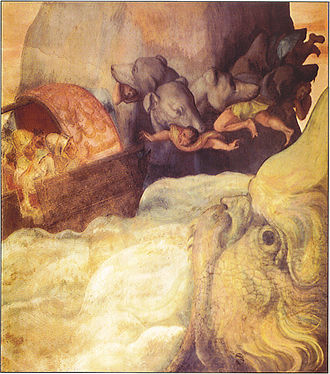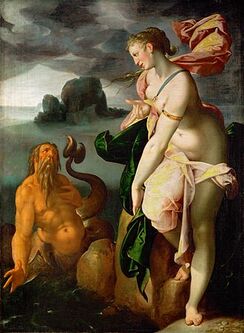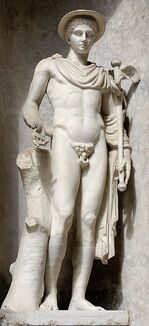|
|
|
Madeline Miller (1978-) is an American author of The Song of Achilles (2011) and Circe (2018). In both novels, she gives an authentic voice to such mythological characters as Achilles, Patroclus, and Circe that Homer sang about some 2800 years ago in The Iliad and The Odyssey.
|
Ch. 1: Parentage, birth, and infancy of Circe
What does the name Circe connote?
Describe Circe's physical appearance by utilizing direct quotations (5 sentences).
Describe Circe's personality by utilizing inference (3 sentences).
Identify one prominent literary feature employed in this chapter and provide three direct quotations. In what ways and to what extent does this literary device accentuate the author's purpose?
What attitude does Circe have toward the feminine guile her mother Perce employs in her relationship to her husband Helios?
What attitude does Circe have toward other immortals (especially when she visits Helios' sacred herd of cows)?
Ch. 2:War between the subterranean Titans and the celestial Olympians; Prometheus is tormented and persecuted by his own brethren, the Titans
Identify three commonalities Prometheus and Circe share.
What according to Prometheus makes mortals capable of achieving uniqueness and complexity?
Ch. 3: Circe's siblings (Pasiphae, Perses, and Aeetes) pursue their own destiny
Why and how does Circe develop a strong bond with Aeetes while Pasiphae and Perses remain aloof and distant?
Synesthesia (sin-uh s-thee-zhee-uh) is a literary device that associates one sense in terms of another, most often by cross-wiring two or more senses such as visual, olfactory, auditory, tactile, and gustatory imagery. Miller often employs synesthesia in achieving verisimilitude, as in "I smelled something sharp and green, with a brackish edge" (67) and "The fear sloshed over me, each wave colder than the last"(81). Please try to identify them as they come in the upcoming chapters.
Chapter 4
What does Circe learn about mortals from her relationship with Glaucos?
Chapter 5: Circe transforms Glaucos
Chapter 6
Circe begins her narrative by confiding "When I was born, the name for what I was did not exist" (3). Now, Circe accepts a new identity and a name for it. What is the name for her kind?
In what ways does Aeetes circumvent Helios' wrath?
Chapter 7: Circe in exile
Which animal does Circe choose as her familiar?
What magical trick does Circe have a natural aptitude for?
Chapter 8: Hermes
What is Circe's island called?
In what ways does Circe take advantage of Hermes' visits?
Scylla and Charybdis |
Glaucos and Scylla |
Hermes Ingenui (Vatican Museums) with caduceus, a round hat, and a traveler's cloak |



